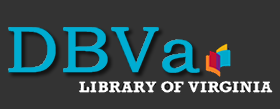CONTENT WARNING
Materials in the Library of Virginia’s collections contain historical terms, phrases, and images that are offensive to modern readers. These include demeaning and dehumanizing references to race, ethnicity, and nationality; enslaved or free status; physical and mental ability; and gender and sexual orientation.
Context
This map is attributed to Captain John Smith (1580–1631) and is one of the earliest representations of Virginia. Smith began a three-month exploration of the Chesapeake Bay and its adjacent waterways in June 1608. He interacted with Indigenous peoples and relied on them for information about the region, including areas that he did not visit. The names and locations of Indigenous tribes living in the tidewater region they called Tsenacomoco (the Powhatan paramount chiefdom) are included on the map, thereby preserving Indigenous knowledge of the land and the people living there.
Smith intended the map to build interest and support for the Virginia Company's settlement of the colony and the search for exploitable resources for financial gain. While his exploring party never found gold, the lost colony of Roanoke, or a passage to the Pacific Ocean, he did gather enough information to produce a map that accurately delineated the Chesapeake Bay and the tidewater region of Virginia, one of the earliest maps to do so. The map shows the Chesapeake Bay and four major rivers: the Powhatan, Pamunk, Tappahannock, and Patowomec, as they were named by the Indigenous peoples. The English renamed the rivers as the James, York, Rappahannock, and Potomac, respectively. Vignettes on the outside of the map include an illustration of Paramount Chief Powhatan in his lodge.
In November 1608, Smith sent several documents to England, including a “Mappe of the bayes and rivers.” In 1611, he engaged William Hole to engrave the map of Virginia to accompany his pamphlet entitled A Map of Virginia. With a Description of the Countrey, the Commodities, People, Government and Religion (1612). Smith's map was the most accurate and detailed map of the Chesapeake Bay and the Atlantic coastline produced in Europe until 1673. It was the source for virtually all printed maps of Virginia for more than sixty years and is considered to be one of the most significant maps of colonial America.
To learn more about the map from the perspective of Virginia Indian tribes, watch this video (4:23 min.) on Indigenous Reflections on Smith's Map and the Recovery of Tribal Pasts.
Citation: Virginia / Discovered and Discribed by Captayn John Smith 1606; Graven by William Hole. G3880 1624 .S5 Voorhees Collection, Library of Virginia.
Standards
Science: 4.8, ES.1, ES.8
Suggested Questions
Preview Activity
Look at it: What geographic area is shown on the map? What features on the map are different from maps we use today? What do you notice about the map's orientation? Why might John Smith have presented the map in that way?
Post Activities
STEM Stat: English explorers like John Smith did not have much information about the land they named Virginia. What is included in this map? What kinds of things are drawn in detail? What is missing from this map? What can the map tell us and what can it not tell us about this time period?
Analyze: How would this map be useful for people seeking to travel to Virginia or invest in new colonies?
Food For Thought: If you were to draw a map of a place you had never visited, how would you gather information about that place? What would you do differently if you were to draw a map of your home town or city? What would you include and think is important enough to point out to people unfamiliar with the area?
